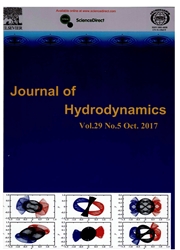

 中文摘要:
中文摘要:
With the current rapid economic growth, heavy metal pollution has become one of the key issues in the Taihu Lake. Although heavy metal pollution levels and distributions of the Taihu Lake have previously been described, an effective model to describe the transport process of heavy metals between the water column and sediment bed for this lake is not available. It is known that heavy metals in the water column can be related to the resuspension of sediment in the lake bed. In this study, we set up a coupled model of relating hydrodynamics, sediment and heavy metals based on Environmental Fluid Dynamics Code (EFDC), and applied it to Taihu Lake, China. For calibration and validation of the model, we employed two series of field sampling data taken all over Taihu Lake during April and July of 2009. The results show that the hydrodynamics simulations of the coupled model agree with the observations reasonably well and the sediment and heavy metal model shows similar variation trends during the simulation. Our results indicate that the model can be used for simulating the sediment and heavy metal transport process in the Taihu Lake and here we provide an effective tool for water quality management at small time scales.
 英文摘要:
英文摘要:
With the current rapid economic growth, heavy metal pollution has become one of the key issues in the Taihu Lake. Although heavy metal pollution levels and distributions of the Taihu Lake have previously been described, an effective model to describe the transport process of heavy metals between the water column and sediment bed for this lake is not available. It is known that heavy metals in the water column can be related to the resuspension of sediment in the lake bed. In this study, we set up a cou- pled model of relating hydrodynamics, sediment and heavy metals based on Environmental Fluid Dynamics Code (EFDC), and app- lied it to Taihu Lake, China. For calibration and validation of the model, we employed two series of field sampling data taken all over Taihu Lake during April and July of 2009. The results show that the hydrodynamics simulations of the coupled model agree with the observations reasonably well and the sediment and heavy metal model shows similar variation trends during the simulation. Our results indicate that the model can be used for simulating the sediment and heavy metal transport process in the Taihu Lake and here we provide an effective tool for water quality management at small time scales.
 同期刊论文项目
同期刊论文项目
 同项目期刊论文
同项目期刊论文
 期刊信息
期刊信息
